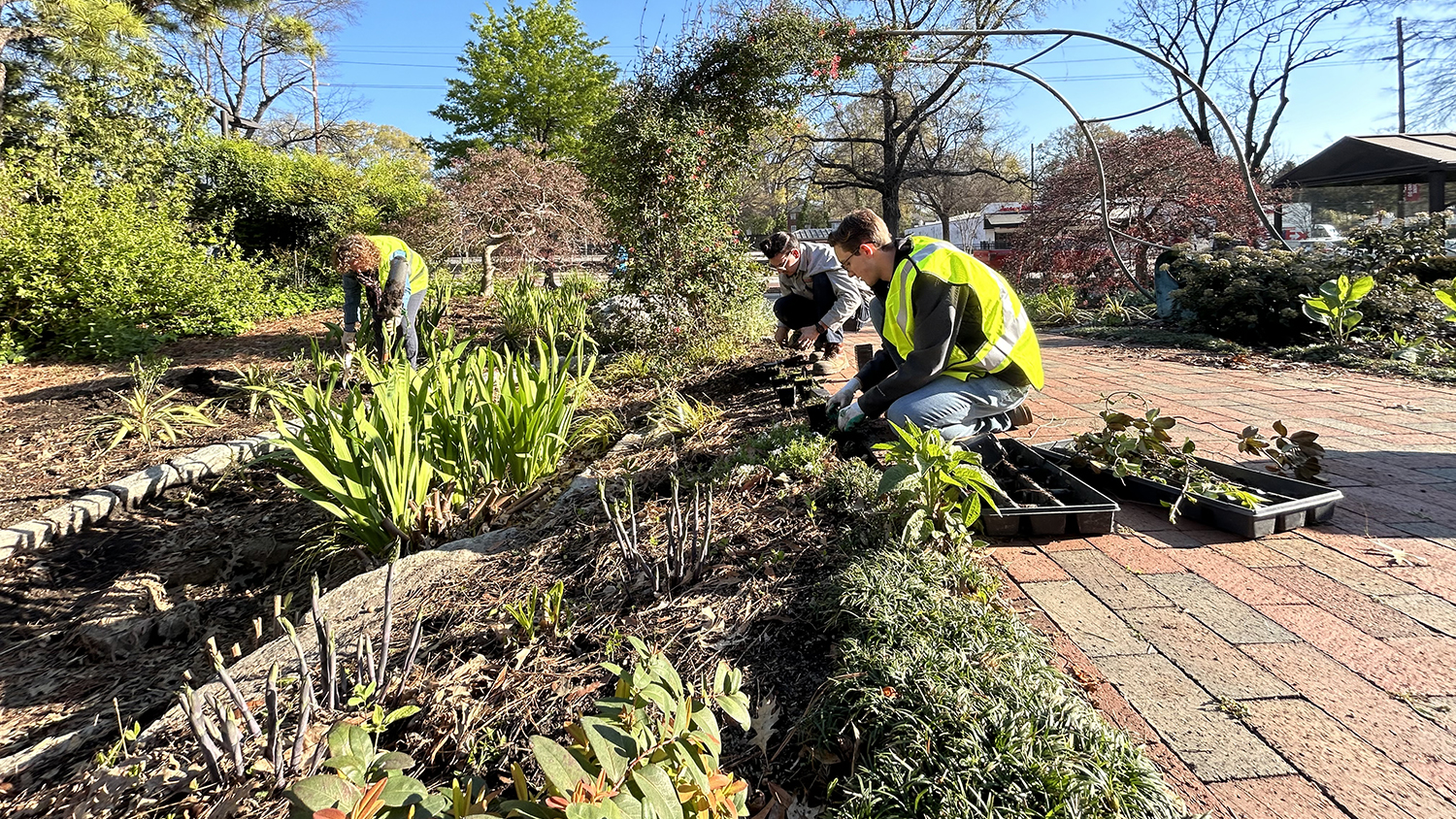Project fuels interest in canola
When leaders of a project designed to provide homegrown, renewable fuels for the military and to strengthen Eastern North Carolina agriculture needed help finding the right source crop and testing it locally, they turned to N.C. State University and its N.C. Cooperative Extension Service for help.
The project, called “Fuel the Force,” culminated in July with the shipment of 800 gallons of biodiesel to Camp Lejeune, a large Marine Corps base in Onslow County.
The fuel was made from canola grown on five 5-acre demonstration plots in Jones and Craven counties with the help of N.C. State’s Jacob Morgan, Dr. Matt Veal, John Garner and Mark Seitz.
The North Carolina Eastern Region Military Growth Task Force coordinated the collaborative project. The task force’s mission is to analyze the way rapid military growth impacts the region and to help prepare the region for that growth.
Morgan, an agricultural Extension agent in Jones County, and Seitz, Extension director for Pender County, worked with local farmers and landowners to create the demonstration plots. Veal, assistant professor of biological and agricultural engineering and Extension bioprocessing specialist, and Garner, superintendent of N.C. State’s Williamsdale Farm in Wallace, helped plant the crop, harvest the seeds and then crush the seeds to separate the oil from the meal. And Melissa Evans Hoffman, an agricultural Extension agent in Onslow County, worked with a local grower to test camelina, a related oilseed crop that can be used to make jet fuels.
Morgan, Seitz, Evans, District Extension Director Greg Hoover and Onslow County Extension Director Peggie Garner were on hand July 18 when Major Gen. Carl Jensen welcomed the first shipment of homegrown, canola-derived biodiesel for North Carolina’s military.
Jensen, commanding general of Marine Corps Installations East, praised the project as a first step toward breaking the military’s dependence on petrochemicals, noting that the military must meet aggressive federal mandates to reduce energy consumption by 30 percent by 2015.
“We need to be energy self-reliant,” Jensen said. “This is one small step, a small stone down the mountainside and (we) hope it gains momentum.”
If the project does gain momentum, it could give growers a market for what proved to be a promising crop for Eastern North Carolina. Canola is used to produce oil not only for fuels but also for cooking, and the meal is a good source of protein for livestock.
Veal and Morgan said that canola could easily fit into winter crop rotations, giving growers an economically viable alternative to wheat.
“In Jones County, it would be planted in mid-October after corn harvest in September, and it would be harvested typically around the first week in June, with soybeans being planted after that, basically in the middle of June,” Morgan said.
In part because of interest spurred by the demonstration project, Veal and Garner held a canola field day at the Williamsdale Farm in late May to address growers’ and agents’ questions. About 50 people attended that event, seeing how commercially available varieties performed, learning about production methods and the impact of cultural management strategies on yield, and watching live harvesting and oilseed pressing.
Although the canola project demonstrated that the crop can be grown successfully and profitably in Eastern North Carolina, Morgan pointed out one significant hurdle: Right now, there are no facilities in the region where the canola seed can be crushed to separate the oil and the meal.
A farm in Statesville has a crushing facility, he said, but hauling the harvest that far would push up the price, canceling out the profit potential.
“If they can get that crushing aspect worked out,” Morgan said, “then I think we’ve got a chance for making this a viable crop for Jones County and Eastern North Carolina.”


